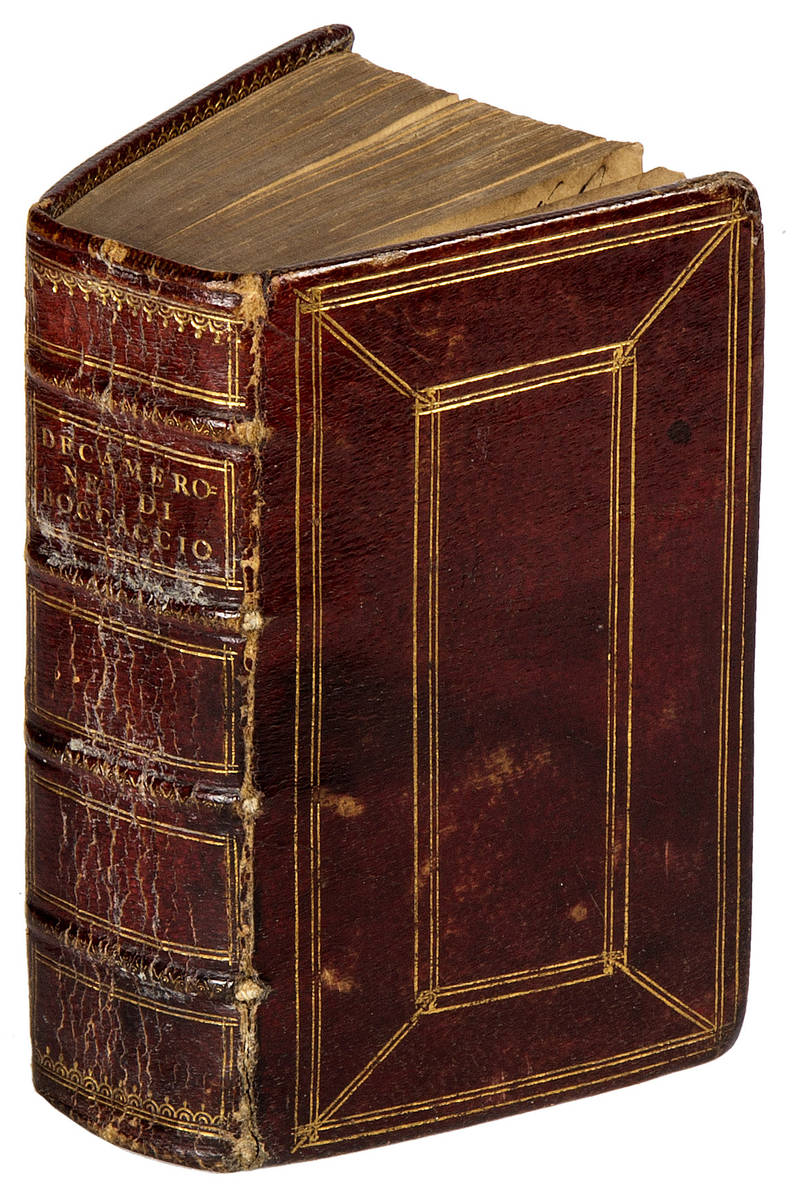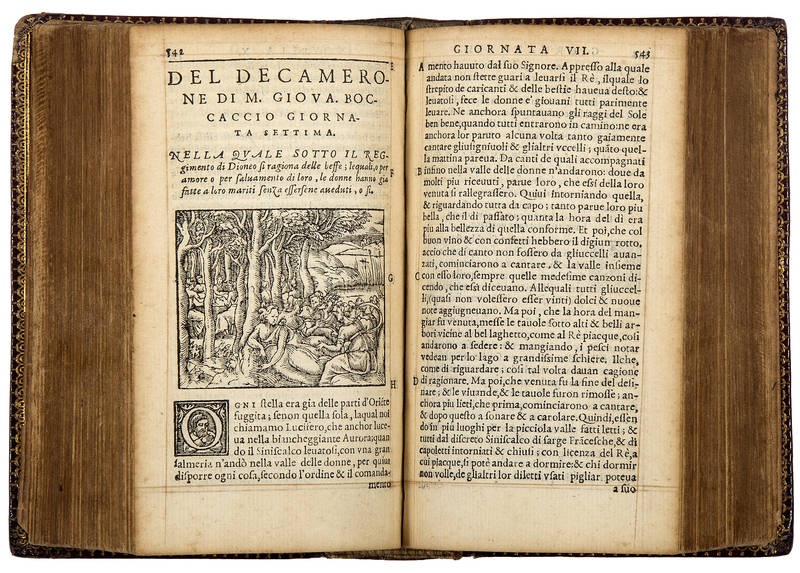Il Decamerone di M. Giovanni Boccaccio, nuovamente stampato, con un raccoglimento di tutte le sentenze, in questa sua opera da lui usate. Aggiunteci le annotationi di tutti quei luoghi, che di queste cento novelle da Monsig. Bembo, [...] sono stati nelle sue prose allegati
Autore: BOCCACCIO, Giovanni (1313-1375)
Tipografo: Guillaume Rouillé
Dati tipografici: Lyon, 1555



